[Here’s a link to other forays around my map.]
Looking back at the photos I took, this grid square seems unremarkable. A foggy day in an industrial park, along a muddy river, and through some scrappy marshland. And yet it was possibly my favourite square so far, possibly the wildest too. It certainly captured my attention more than last week’s square of verdant golf course and affluent woodland homes. This seemed unlikely at first when I cycled into the industrial park in thick fog. Or was it mist, I asked myself?
Both mist and fog are created when the air becomes saturated and water vapour condenses to form droplets that hang in the air. Air becomes saturated more quickly at lower temperatures, so mists and fogs are more likely when a) the air is very humid and/or b) the air is relatively cool.
Fog and mist are both, in physical terms, the same as clouds. The difference between clouds and mist or fog, is just in the eye of the beholder. Clouds you see hugging a mountaintop will be mist or fog to a walker near that summit.
The difference between mist and fog is a simple one and it is about degrees of visibility. It does no harm to think of fog as just dense mist, or if you prefer, mist as a light fog. Excellent advise: choose to see warehouses and pallets and portakabins, or consider this the start of a new exploration and a chance to go somewhere I have never been before…
I pedalled past the kinds of businesses that I’ve never really heard of, don’t really understand but which probably keep the country running. Amazon fulfilment units, patches of concrete and gravel growing with weeds, razor fencing, diggers, noisy machines, heaps of gravel, and men in orange overalls calling out with cockney or Eastern European accents. And, of course, litter everywhere as always. A shopping trolley was upended in a stagnant pool of water, another was wedged into the legs of an electricity pylon. Padlocked shipping containers, access barriers, and tattered office chairs outside fire doors for cheeky fag break rests. The morning felt quiet; fog does this somehow. It lowers a blanket over the world which I quite like.
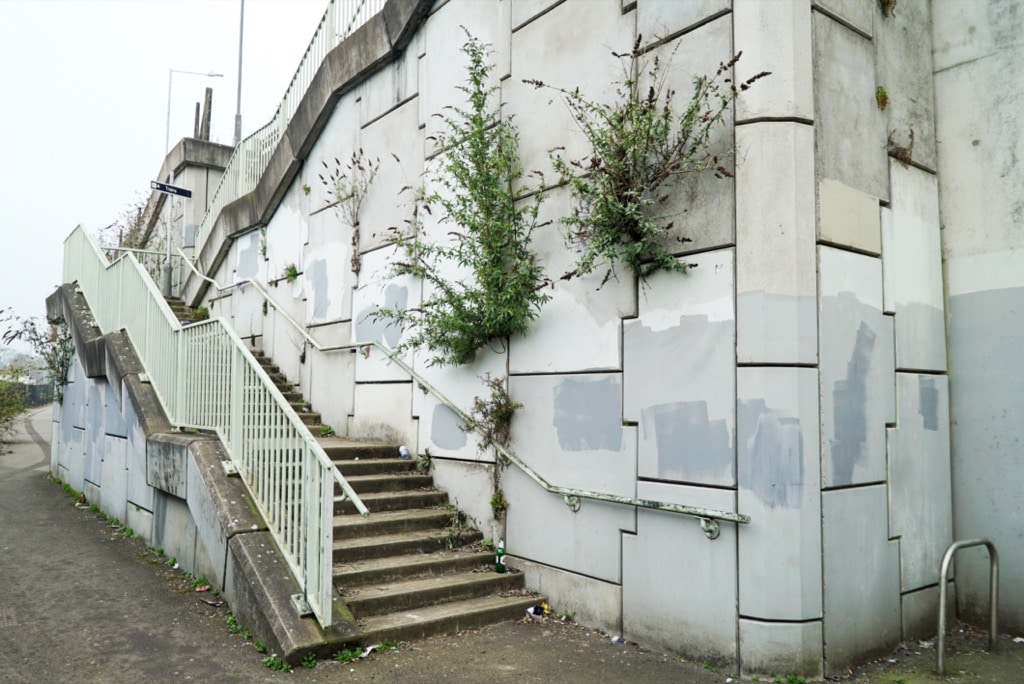
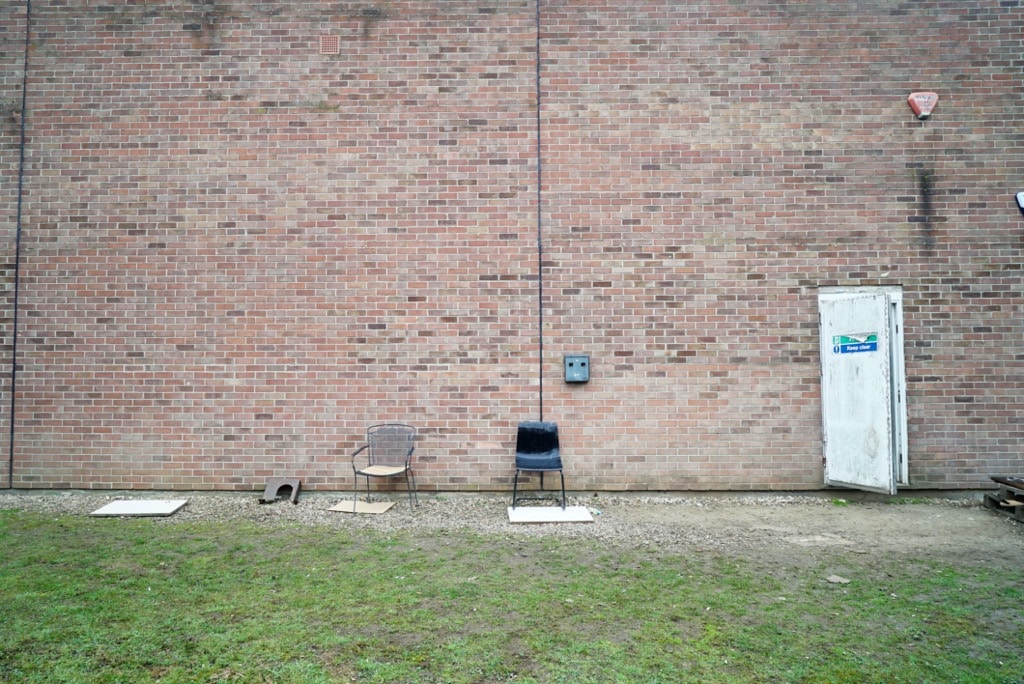
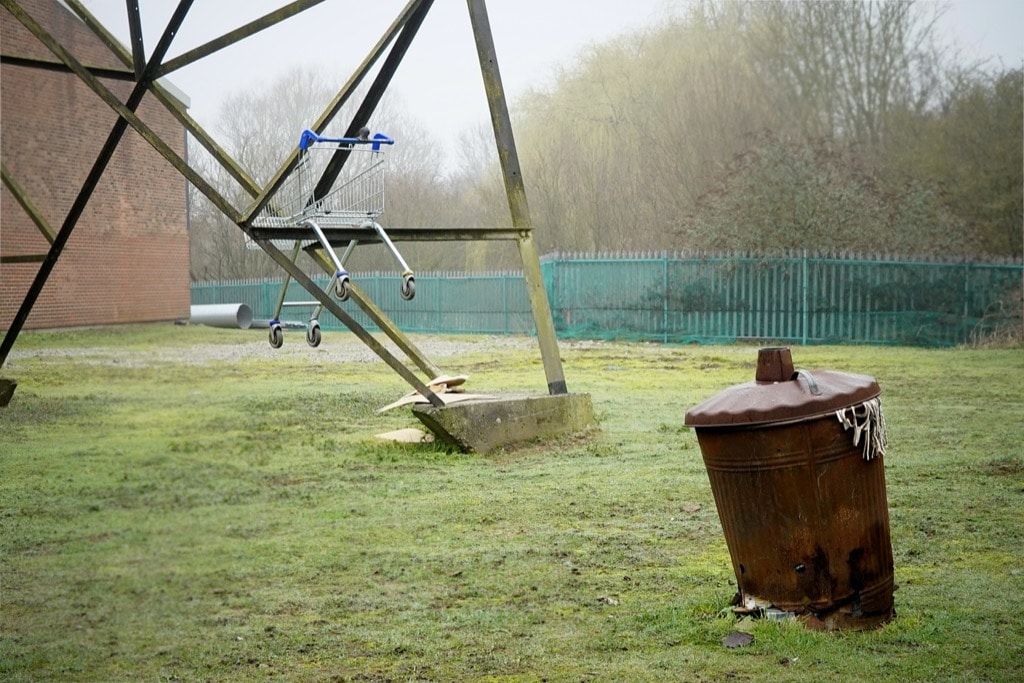
A few fragments of footpath survived amongst all this concrete and barbed wire, narrow paths hemmed in by chainlink, spiky, tangled hawthorn trees, brambles, beer cans, and plastic. Weirdly, someone had garlanded a tree with strings of seashells, a rubber duck, the head of an Action Man, and an upturned traffic cone. Behind the warehouses I crossed a railway line on one of those unguarded crossings you occasionally find in quiet places. Other than a sign warning you to be careful, you’re very much on your own. I enjoy these crossings: they feel exposed and liberating.
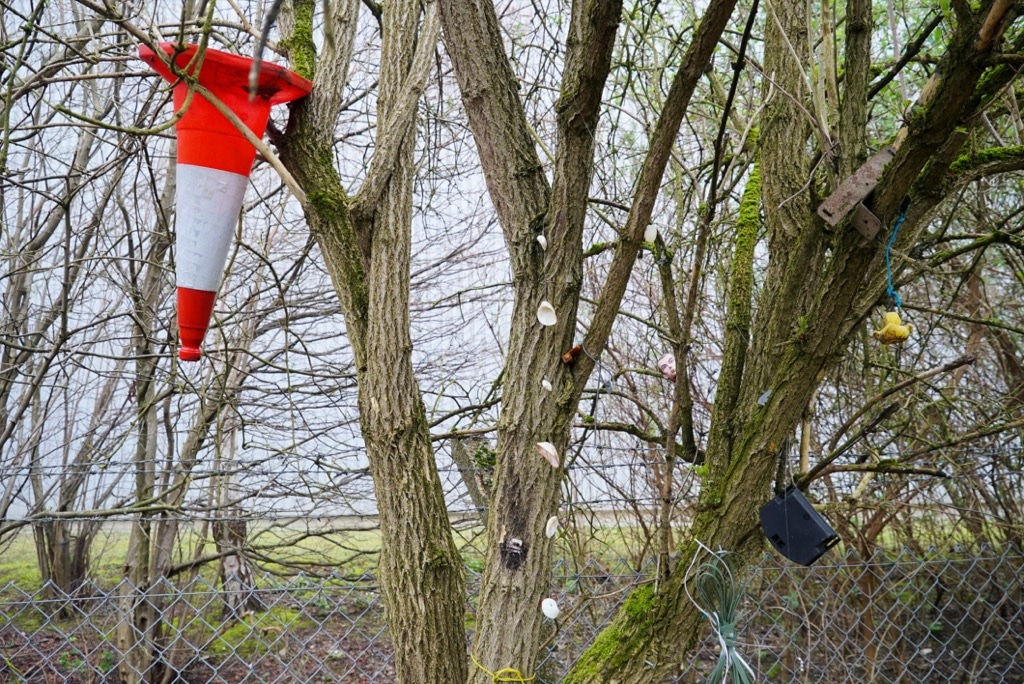

I was drawn by the distinct, fresh smell of cold lake water. It’s such a good, uplifting odour. “Long enough in the desert a man like other animals can learn to smell water,” wrote Edward Abbey in Desert Solitaire. “Can learn, at least, the smell of things associated with water — the unique and heartening odour of the cottonwood tree, for example, which in the canyon lands is the tree of life.”
Here, just across the railway tracks from all the industry was a misty, moody, monochrome lake lined with tall reeds. A heron circled overhead, stately and assured like a large aircraft coming in to land. A pair of black and white tufted ducks careened in to land. A few coots drifted on the smooth water. These birds always draw a wry smile from me. A thousand lifetimes ago I studied the ‘agonistic communication’ of coots for my university dissertation. My heart had already clocked off from academia long ago and was getting ready to hit the road. I struggled to summon much enthusiasm asking questions like, ‘if natural selection is survival of the fittest, why isn’t everything a competition?’ Cooperation and competition have a fitness face off in game theory. I had requested to do my fieldwork in Africa, but was unceremoniously packed off to a chilly Edinburgh pond, much like the one I’d discovered today. I smiled at my youthful disappointment and turned away from the coots.
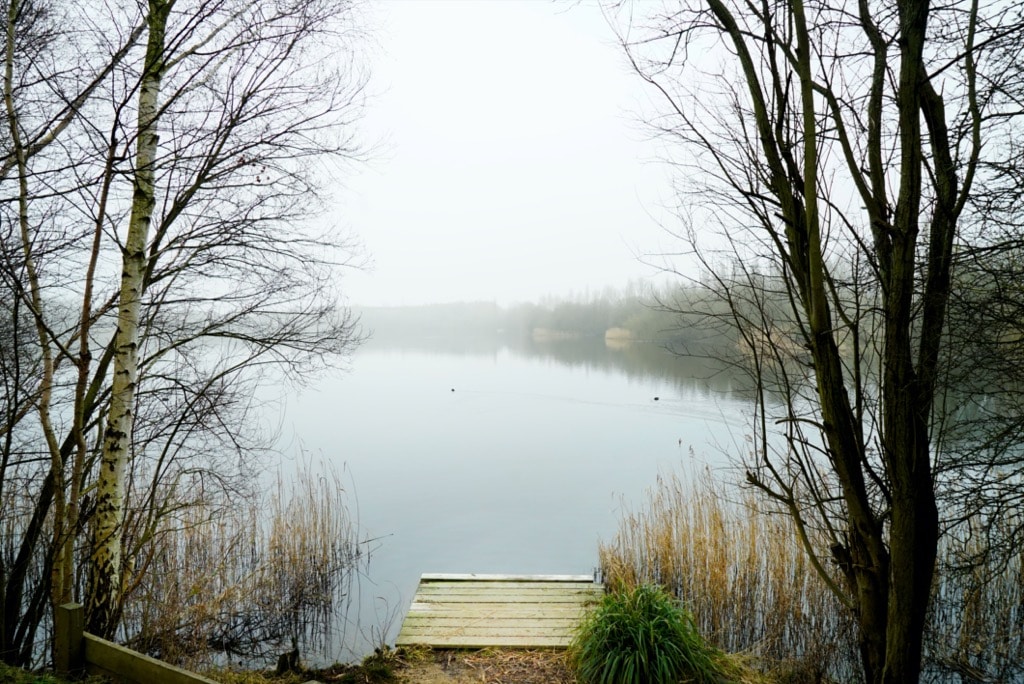
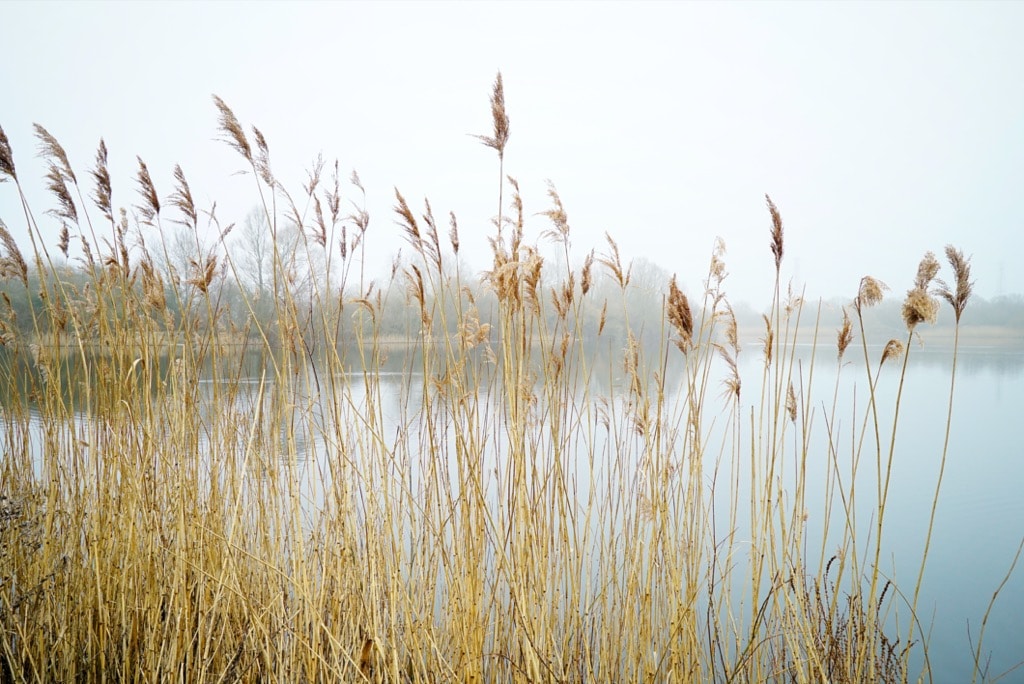
Past the two lakes lay the river I had come to see. From studying my map I held out hopes that this might be the only swimmable span on my map. I was disavowed of this idea at first glance. The estuarine banks were sheer and muddy, dropping down ten feet or more to low tide mudbanks and a swift, broad waterway. No good for swimming, perhaps, but certainly good for wildlife. Three herons chattered and squabbled in a tree-top heronry. The sight of a grey heron standing in solitary siege on rivers and waterways is one that is as familiar as it is bewitching. Yet for around three months of the year from February these distinctive-looking birds, with their crests, dagger bills and stilt-like legs come together to breed. A heronry is somewhere herons have nested for many generations and in certain places it’s possible to catch a rare glimpse of up to 40 nests teetering in the tree-tops at any one time.
There was an old World War 2 hexagonal pillpox, wreathed in ivy and vines, but still standing strong with its 2-foot thick walls. In 1940 a network of defences was hastily built all over the British Isles to prevent an anticipated German invasion. The most common of these defences were called “pillboxes”, squat concrete forts that were sited at road junctions, canals and other strategic points.
With the passage of time it is estimated that less than 6,000 of a total of 28,000 pillboxes built still survive. They remain as permanent monuments and a silent tribute to the courage and tenacity of the British people during the dark days of 1940 when Britain stood alone against Nazi Germany.
A memo from 1940 stated, “The immediate object is to divide England into several small fields surrounded by a hedge of anti-tank obstacles which is strong defensively, using natural accidents of the ground where possible. Should Armoured Fighting Vehicles attack or airborne attacks break into the enclosures the policy will be to close the gate by blocking the crossing over the obstacles and to let the ‘dogs’ in the shape of armoured formations, or other troops, to round up the cattle.” This indicates that the stop-lines were constructed to block the progress of German armoured columns, setting them up for a counter attack by our defending forces. A Stop-Line would be a continuous anti-tank obstacle, natural if possible, covered by Pillboxes and other prepared positions.
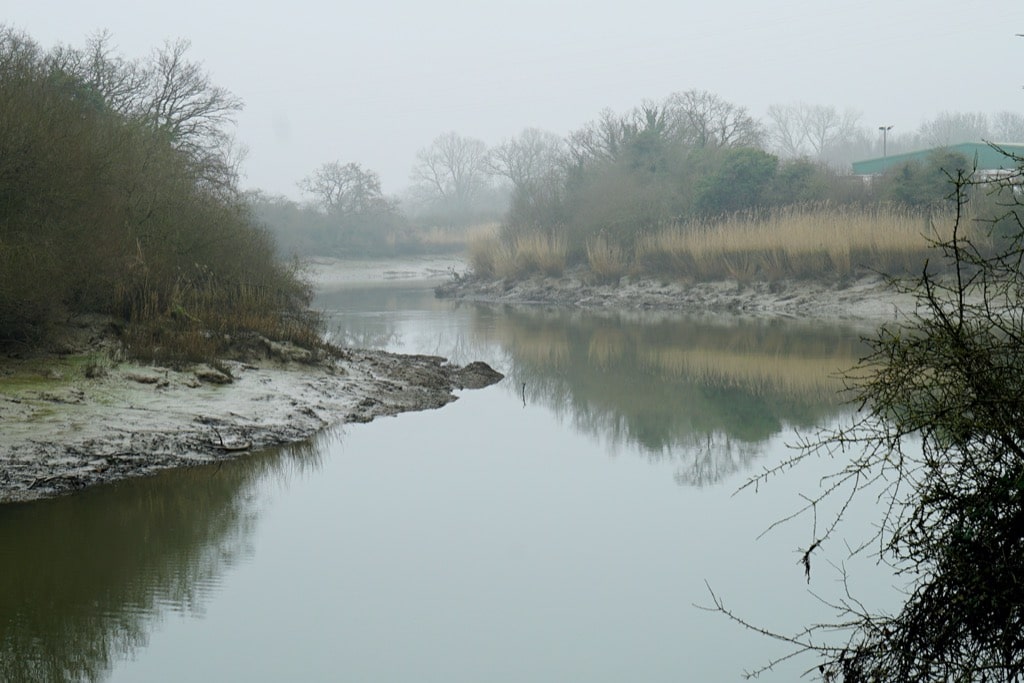
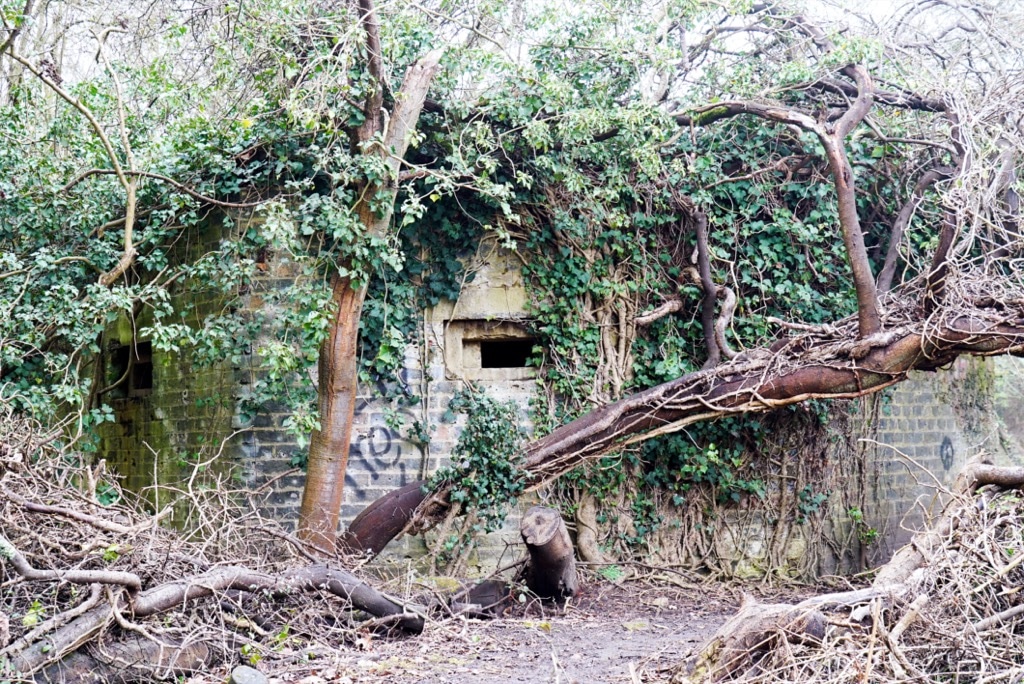
This was a strange, in-between area of tidal creeks and reed beds merging gradually towards marshland. Found in the zone between water and land, reedbeds are transitional habitats. Thickly vegetated yet waterlogged, they are home to secretive species such as bittern and bearded tit. They can form extensive swamps in lowland floodplains, or fringe streams, rivers, ditches, ponds and lakes with a thin feathery margin of reeds. Densely green in summer, they fade in winter and colour whole vistas a distinctive, delicate blonde. Reeds have modified stems (rhizomes) that run horizontally underground and grow multiple, densely spaced upright shoots each year. These usually reach about two metres in height and remain standing the following year, helping to aerate the submerged roots.
In the fog and the stillness of the reed beds I found myself describing it with words like “peaceful, uplifting, emotional, releasing”. What a difference to the industrial yards just a few hundred metres away. The way this riverside and the reedbeds so tangibly affected my mood is linked to the notion of Nature Connectedness – people’s sense of their relationship with the natural world.
The pathways to nature connectedness provide a route for people to develop a new relationship with the natural world. This new relationship with nature can move beyond utility and control, beyond knowledge and identification. A new closer, healthier and more sustainable relationship with nature comes through noticing, feeling, beauty, celebration and care. Our pathways are:
- Senses – tuning in to nature through the senses
- Emotion – feeling alive through the emotions and feelings nature brings
- Beauty – noticing nature’s beauty
- Meaning – nature bringing meaning to our lives
- Compassion – caring and taking action for nature
In the UK I take having flawless, detailed maps for granted. And so the Ordnance Survey mistaking a pipeline across the river for a footbridge was a surprising and rare mistake.
Britain’s mapping agency has its roots in military strategy: mapping the Scottish Highlands following rebellion in 1745. Later, as the French Revolution rumbled on the other side of the English Channel, there were real fears the bloodshed might sweep across to our shores.
So the government ordered its defence ministry of the time – the Board of Ordnance – to begin a survey of England’s vulnerable southern coasts. Until then, maps had lacked the detail required for moving troops and planning campaigns.
It was an innovative young engineer called William Roy who was tasked with the initial small-scale military survey of Scotland. Starting in 1747, it took eight years to complete what was known as the Great Map at a scale of 1:36 000 (1.75 inches to a mile). Roads, hills, rivers, types of land cover and settlements were recorded. William Roy described it as rather a ‘magnificent military sketch than a very accurate map of the country’.
Roy’s surveying parties of about eight relied on simple surveying compasses to measure the angles, and chains up to 50 feet long to measure distance between important features. Much of
the rest was sketched in by eye. Nevertheless, the map was a powerful tool as part of a broader strategy to open up access to the Highlands.
The fact that Roy was just 21 years old with no military commission when he started the survey makes his achievements even more extraordinary. His work paved the way for modern surveying and he understood the strategic importance of accurate maps.
I reported the map error via Twitter (what would William Roy have made of that?) and set off on a lengthy detour (that involved –shock, horror– veering off my map😱) to get across the river and onto the other half of my grid square.
I found a new sort of farm on the other riverbank: a solar farm. The expanse of smooth blue panels, facing south, was angled towards a sun still well-hidden by mist. I wondered what this area used to beforehand. It felt like old industrial growback, with shrubs and saplings reclaiming a landscape that was clearly once covered by buildings, concrete and tracks. Some later Googling revealed that this had been the site of a huge brick and lime factory, constructed by the master builder Thomas Cubitt to provide a reliable source of good quality bricks for his London building projects. Cubitt developed many historic squares and buildings in London’s smart Belgravia, Pimlico, and Bloomsbury areas. After his death, Queen Victoria said, “In his sphere of life, with the immense business he had in hand, he is a real national loss. A better, kindhearted or more simple, unassuming man never breathed.”
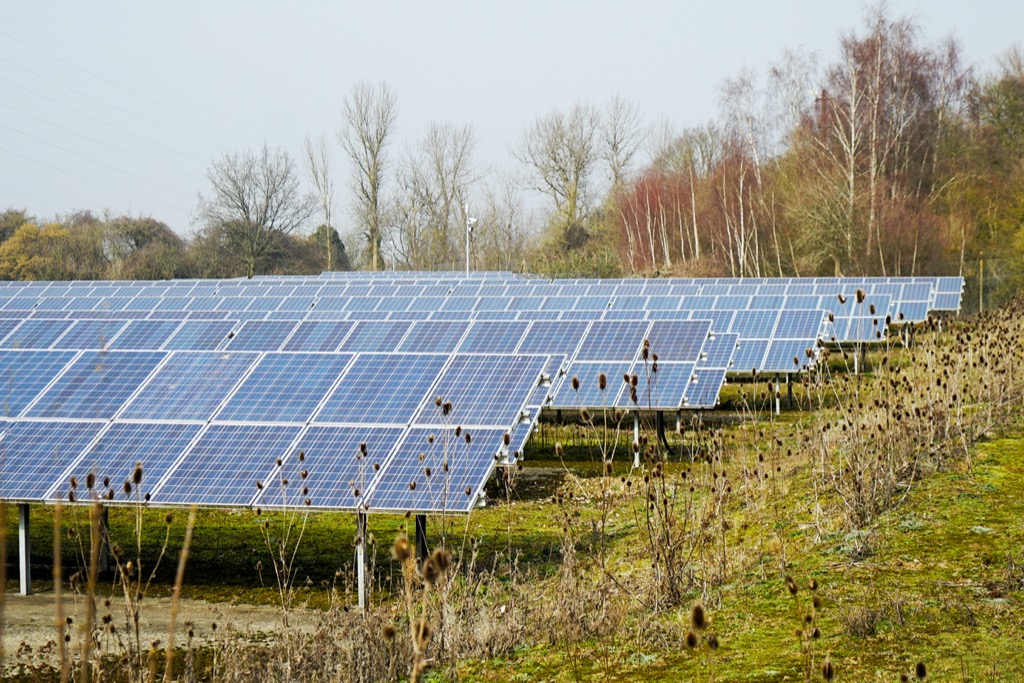
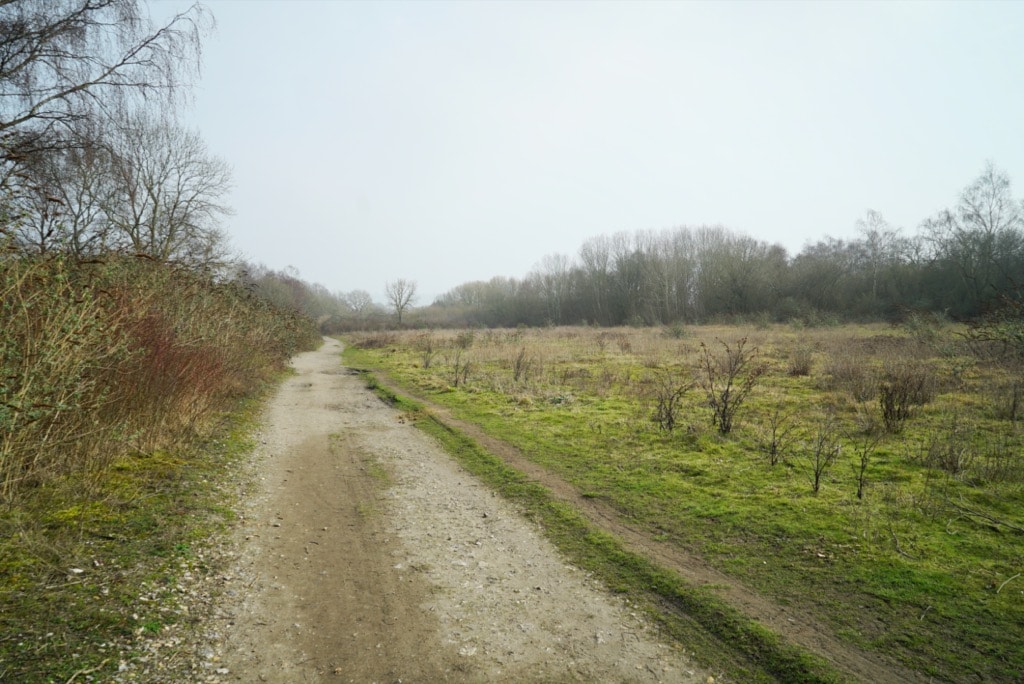
Today it was covered in areas of grass, scrub, and woodland. I pushed through thick undergrowth to explore the muddy, deserted creek. An old flooded quarry had been fenced off by the Water Board. A shame, I thought, as it looked appealing. It seems I was not the only person sorry to be denied access, for one of the fence panels had been torn off and a well-used footpath led down to the shore. If you ignored the dozens of discarded Fosters lager cans, the bottles of cheap import vodka, and the discarded fishing tackle then it was a beautiful spot. I’ve been learning a lot about this mindset during the past year, and during my wanderings across my map. It’s probably true for all of us that we are constantly in search of the serenity to accept the things I cannot change, the courage to change the things I can, and the wisdom to know the difference.
In this example it involved me ignoring the litter and appreciating having this lake to myself on a fresh spring day, the clean water, and the cheerful sound of birdsong. It involved me stripping off and wading in for my first wild swim of the year: very nippy, but very invigorating. And it involved filling my rucksack with as much of the litter as possible when I departed.
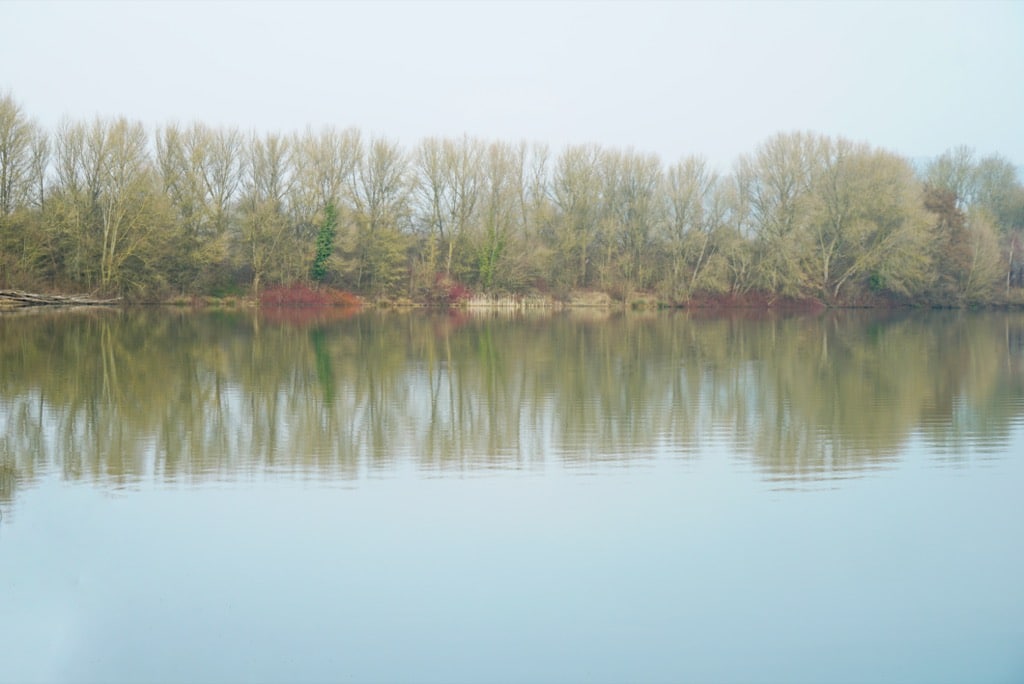

170 years ago this land was covered with buildings, kilns, brick-drying sheds, warehouses, riverside wharves, and tall brick chimneys belching sulphurous smoke. It would have been a whirlwind of industry and enterprise. Yet all that has been razed to the ground and almost nothing remains. Nature had returned in its place. I decided that this grid square was the wildest I had visited so far. The fact that it is reclaimed wildness cheered me too. Within limits, nature will return, rebound, and reclaim its place if we just step aside and allow it to do so. If we don’t wreck things too much, the earth can recover. I had spent almost the whole day mooching happily around this single square kilometre, and headed for home feeling that I wanted to return another day. That certainly was not what I expected when I arrived in a foggy industrial park at the start of the day.
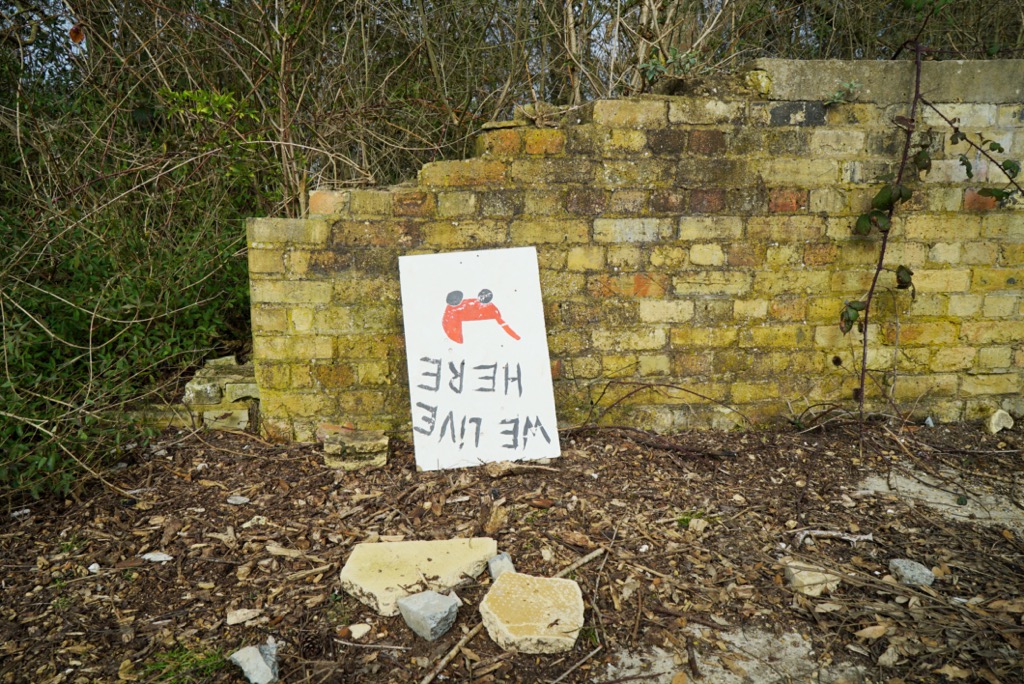
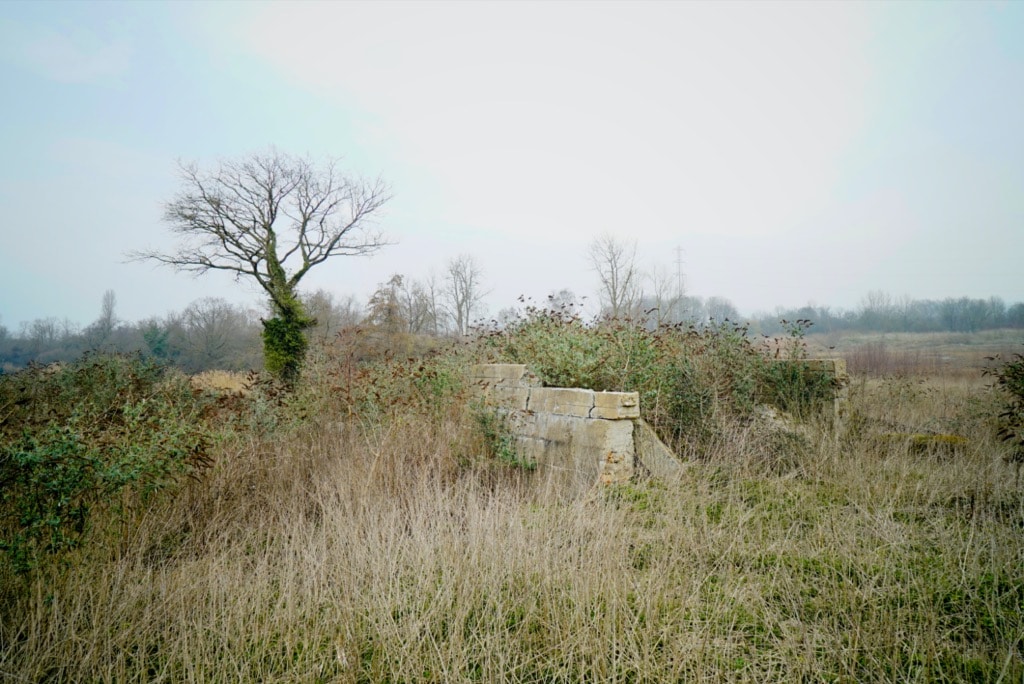



Comments